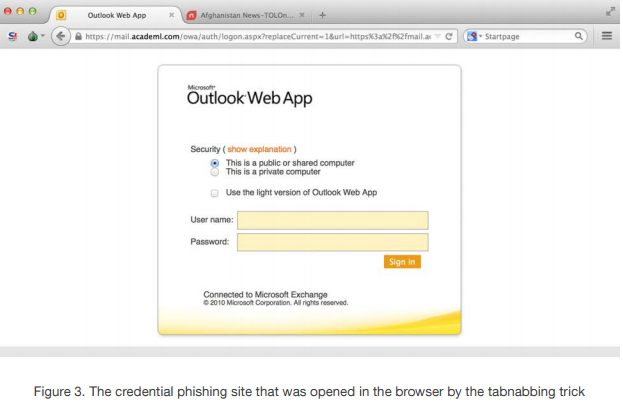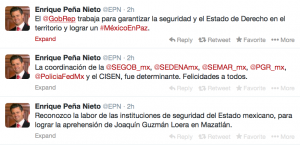10 Years of emptywheel: Key Non-Surveillance Posts 2016-2017
Happy Birthday to me! To us! To the emptywheel community!
On December 3, 2007, emptywheel first posted as a distinct website. That makes us, me, we, ten today.
To celebrate, over the next few days, the emptywheel team will be sharing some of our favorite work from the last decade. I’ll be doing probably 3 posts featuring some of my most important or — in my opinion — resilient non-surveillance posts, plus a separate post bringing together some of my most important surveillance work. I think everyone else is teeing up their favorites, too.
Putting together these posts has been a remarkable experience to see where we’ve been and the breadth of what we’ve covered, on top of mainstays like surveillance. I’m really proud of the work I’ve done, and proud of the community we’ve maintained over the years.
For years, we’ve done this content ad free, relying on donations and me doing freelance work for others to fund the stuff you read here. I would make far more if I worked for some free-standing outlet, but I wouldn’t be able to do the weedy, iterative work that I do here, which would amount to not being able to do my best work.
If you’ve found this work valuable — if you’d like to ensure it remains available for the next ten years — please consider supporting the site.
2016
Why Doesn’t Dianne Feinstein Want to Prevent Murders Like those Robert Dear Committed?
I’ve written a lot about how the focus on Islamic terrorism, based on a claim it’s foreign, creates gross inequalities for Muslims in this country, and does nothing to address some of our most dangerous mass killers (as the Stephen Paddock massacre in Las Vegas makes all too clear). This post is one of that series. It focuses on how the ill-advised efforts to use the No Fly List to create a list of those who couldn’t own guns would be discriminatory and wouldn’t add much to safety.
“Only Facts Matter:” Jim Comey Is Not the Master Bureaucrat of Integrity His PR Sells Him As
From the periods when Jim Comey was universally revered as a boy scout through those when Democrats blamed him for giving us Trump (through the time Democrats predictably flip flopped on that point), I have consistently pointed to a more complicated story, particularly with regards to surveillance and torture. I think the lesson of Comey isn’t so much he’s a bad person — it’s that he’s human, and no human fits into the Manichean world of good guys and bad guys that he viewed justice through.
NSA and CIA Hacked Enrique Peña Nieto before the 2012 Election
As Americans came to grips with the fact that Russia had hacked Democrats to influence last year’s election, many people forgot that the US does the same. And it’s not even just in the bad old days of Allen Dulles. The Snowden documents revealed that NSA and CIA hacked Enrique Peña Nieto in the weeks before he was elected in 2012. The big difference is we don’t know what our spooks did with that information.
Why Is HPSCI’s Snowden Report So Inexcusably Shitty?
In 2016, HPSCI released its Devin Nunes-led investigation into Edward Snowden’s leaks. It was shitty. Really shitty.
Now that the HPSCI investigation into the Russian hack (which has not been subjected to the same limitations as the Snowden investigation was) has proven to be such a shit show, people should go back and review how shitty this review was (including its reliance on Mike Flynn’s inflammatory claims). There absolutely should have been a review of Snowden’s leaks. But this was worse than useless.
Look Closer to Home: Russian Propaganda Depends on the American Structure of Social Media
As people began to look at the role of fake news in the election, I noted that we can’t separate the propaganda that supported Trump from the concentrated platforms that that propaganda exploited. A year later, that’s a big part of what the Intelligence Committees have concluded.
The Evidence to Prove the Russian Hack
In this post I did a comprehensive review of what we knew last December about the proof Russia was behind the tampering in last year’s election.
Obama’s Response to Russia’s Hack: An Emphasis on America’s More Generalized Vulnerability
Last year, in a speech on the hack, Obama focused more on America’s vulnerability that made it possible for Russia to do so much damage than he did on attacking Putin. I think it’s a really important point, one I’ve returned to a lot in the last year.
The Shadow Brokers: “A Nice Little NSA You’ve Got Here; It’d Be a Shame If…”
In December, I did a review of all the posts Shadow Brokers had done and suggested he was engaged in a kind of hostage taking, threatening to dump more NSA tools unless the government met his demands. I was particularly interested in whether such threats were meant to prevent the US from taking more aggressive measures to retaliate against Russia for the hack.
2017
On “Fake News”
After getting into a bunch of Twitter wars over whether we’re at a unique moment with Fake News, I did this post, which I’ve often returned to.
How Hal Martin Stole 75% of NSA’s Hacking Tools: NSA Failed to Implement Required Security Fixes for Three Years after Snowden
The government apparently is still struggling to figure out how its hacking tools (both NSA and CIA) got stolen. I noted back in January that an IG report from 2016 showed that in the three years after Snowden, the IC hadn’t completed really basic things to make itself more safe from such theft.
The Doxing of Equation Group Hackers Raises Questions about the Legal Role of Nation-State Hackers
One thing Shadow Brokers did that Snowden and WikiLeaks, with its Vault 7 releases, have not is to reveal the identities of NSA’s own hackers. Like DOJ’s prosecution of nation-state hackers, I think this may pose problems for the US’ own hackers.
Reasons Why Dems Have Been Fucking Stupid on the Steele Dossier: a Long Essay
I believe Democrats have been ill-advised to focus their Russia energy on the Steele dossier, not least because there has been so much more useful reporting on the Russia hack that the Steele dossier only makes their case more vulnerable to attack. In any case, I continue to post this link, because I continue to have to explain the dossier’s problems.
Other Key Posts Threads
10 Years of emptywheel: Key Non-Surveillance Posts 2008-2010
10 Years of emptywheel: Key Non-Surveillance Posts 2011-2012
10 Years of emptywheel: Key Non-Surveillance Posts 2013-2015






